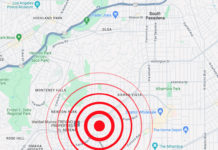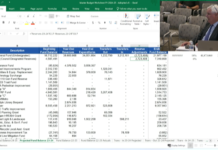Have you noticed that sometimes when you’re really upset about a conflict with a family member, friend, or coworker, your reaction might be a little more intense than usual? It likely isn’t just because you’re sensitive – as much as the other person wants you to believe that that’s the case.
In these situations, we’re typically upset about more than just the conflict. It could be that there are several transactions in this relationship that have bothered you and they have all added up. It could be that you’re experiencing stresses and conflicts in other areas of your life. We’ve all been there, and most of us are there with COVID-19 and other hot-button issues going on.
Knowing all the reasons we feel the way we do can be so challenging. There are two useful tools you can use to gain a better understanding of your feelings and thoughts. Make sure to try both as one tool may be easier and more effective for you than the other.
The first is a psychoanalytic technique called “free association” coined by Dr. Sigmund Freud, a German psychiatrist and the founder of psychoanalysis. Although many of Dr. Freud’s theories and techniques have been disproven, free association is one of his enduring ideas – and you can do it for free, without a therapist!
It’s simple. Situate yourself in a calm environment and take a few deep breaths. Then ask yourself – verbally or mentally – how you’re feeling and say or write the very first thought that comes to mind. Always use the first thought, not the second or third thought. Ask follow up questions until you find your answer.
Sometimes this thought trail will lead you to a dead end. If you find that the conclusion of your trail is irrelevant or unhelpful, go back to the question where you think the trail lost its way and start over from there. Sometimes, you may need to go back to the very first question.
You know you best, and therefore you are an expert on free association for yourself. Once you’ve gotten the answer to “how” you’re feeling then ask “why?” Free association takes practice, so don’t beat yourself up if you’re reaching several dead ends at the beginning.
The second tool, “SIFT,” may be easier for some as it is more structured. It is an acronym coined by Dr. Dan Siegel, a psychiatrist at UCLA and author of The Whole-Brain Child. SIFT stands for Sensations, Images, Feelings, and Thoughts. Although Dr. Siegel came up with this technique for children to sift through their emotions and thoughts, it is just as useful for adults!
Go into the method with the intention of investigating why you feel the way you do. Close the door behind you in a quiet space and lie down on your back with your arms by your side. Take several deep breaths until you feel calm.
Ask yourself if there are any Sensations present in your body. Scan your body from the top of your head and move down to your toes. Acknowledge without judgement any heaviness, discomfort, or tension in your body.
Once you have scanned your whole body, ask yourself if there are any Images present in your mind. Allow these images to pass through your consciousness, just taking note of who or what your mind shows you.
Once your mind has shown you all images, ask yourself how you’re Feeling. Let your mind give you all possible answers before moving on to the next step. Then ask yourself what your Thoughts are. It is best to allow each of the four steps to take at least one minute while continuing to breathe deeply. When you finish the exercise, analyze your answers at the end.
SIFT is a powerful method of getting more in touch with your feelings, even when you do not have a specific question to ponder. SIFT is a method I personally use several times a week.
Perhaps Obi-Wan was on to something when he told Anakin to “search [his] feelings.”

















.png)







